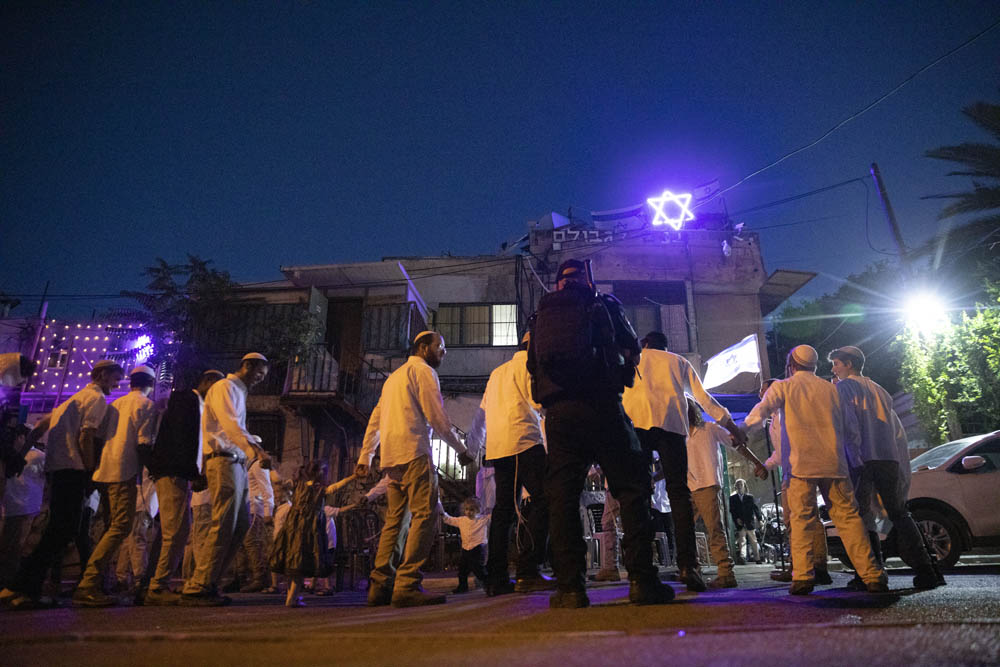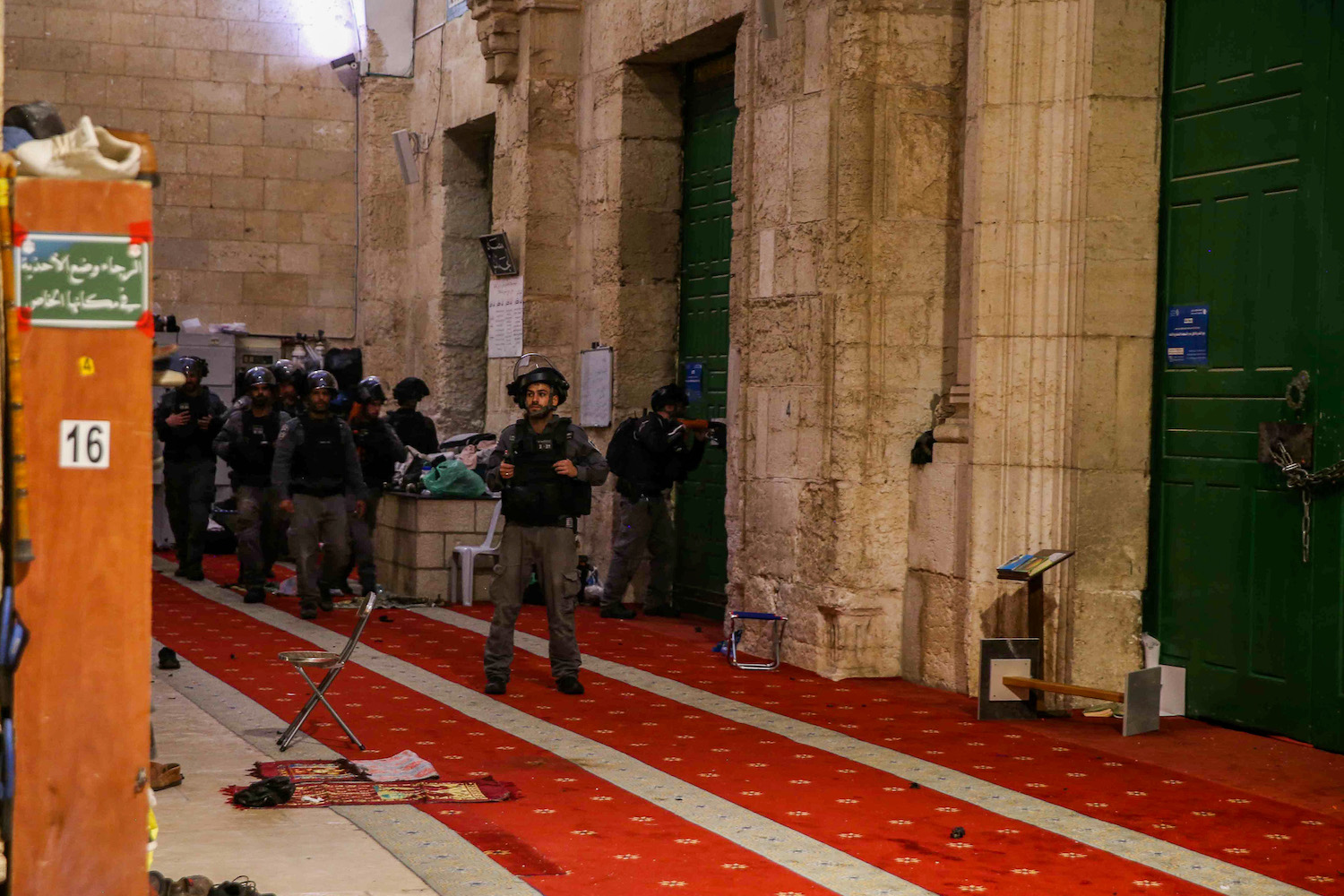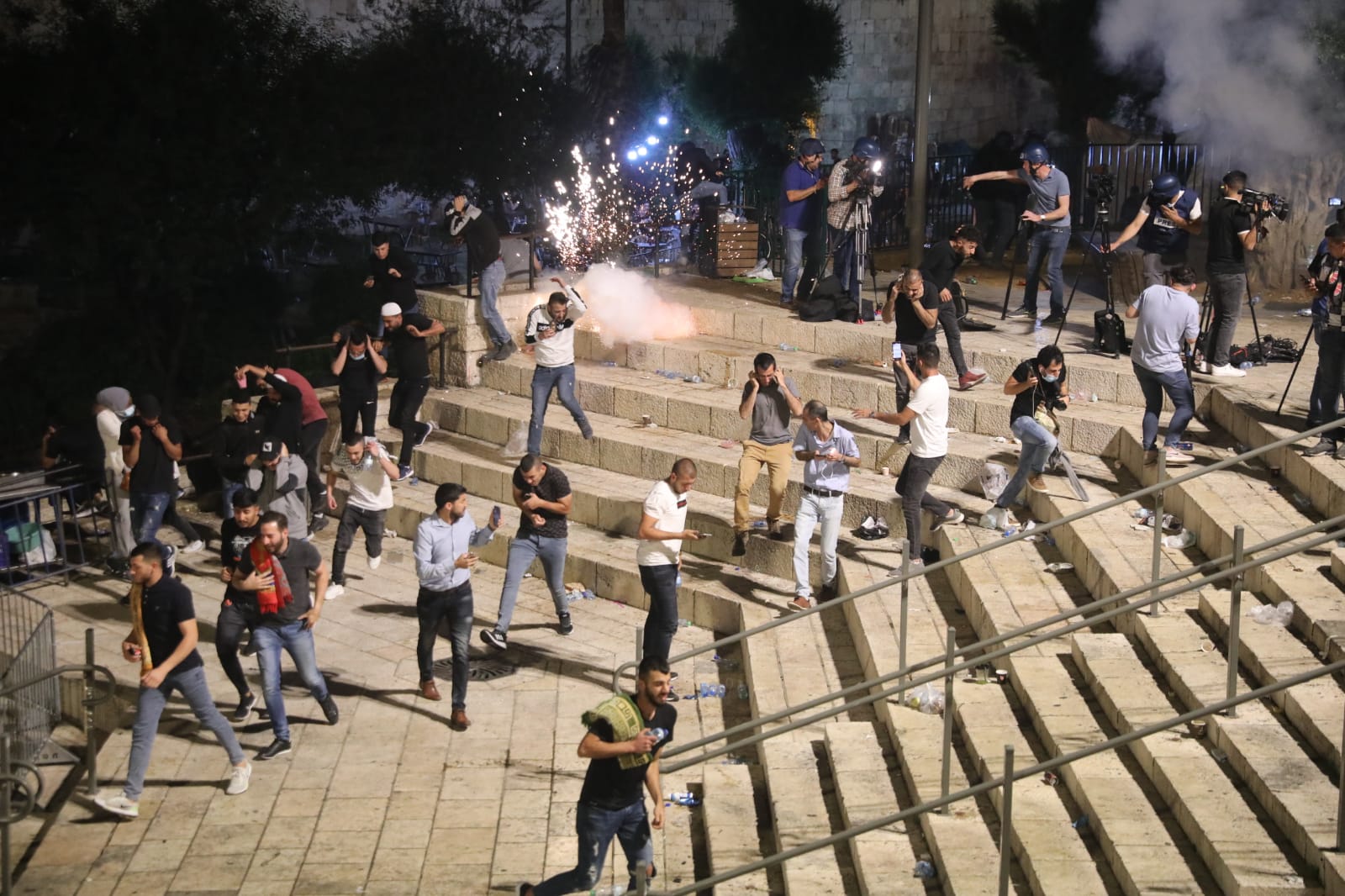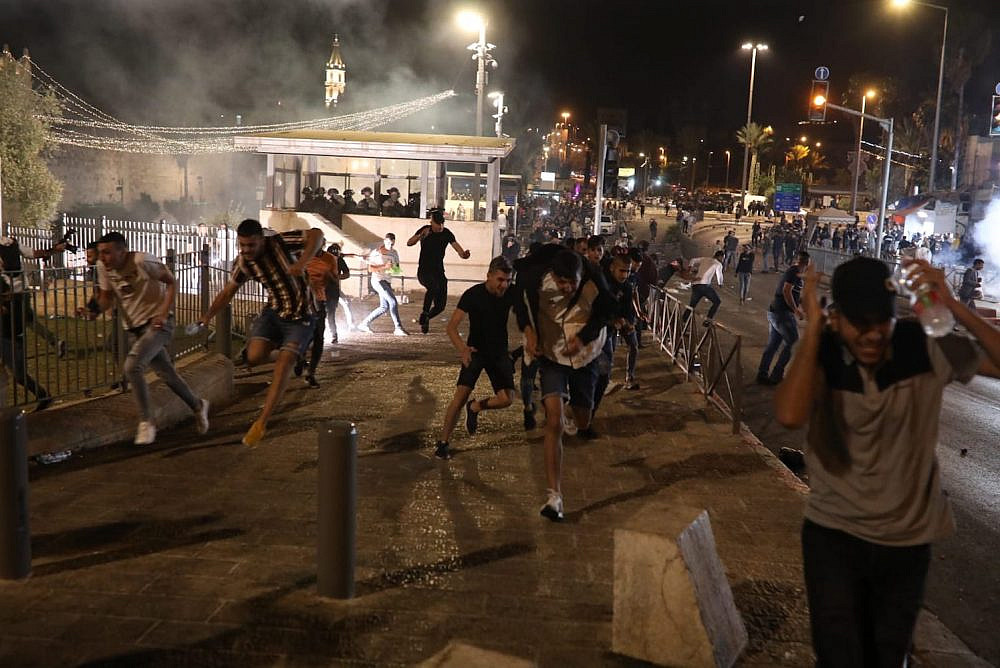For four straight days last week, Israeli police dispersed young Palestinians who had come to Sheikh Jarrah to show support for families facing forcible expulsion by settlers in the East Jerusalem neighborhood. The police labeled the nightly vigils “clashes” and “riots.” In reality, however, it was the police that had resorted to violence.
Over the last three days, Palestinians in Sheikh Jarrah have begun to actively confront the police and the settlers, including by setting fire to a settler’s car. Palestinians in the neighborhood are protesting the pending eviction of four families from their homes and their replacement by Israeli settlers. Just like when the police tried to ban Palestinians from gathering at the Damascus Gate plaza in the Old City during the first half of Ramadan, the officers in Sheikh Jarrah used unnecessary force, which was followed by more force. When Palestinians confronted the police, the officers used it as an excuse to ramp up the violence.
On Friday, during the weekly demonstration in Sheikh Jarrah, policemen threw stun grenades at a crowd of mostly Israeli left-wing activists. Later in the evening, Palestinians who had arrived from Umm al-Fahem in Israel’s north were barred by police from entering the neighborhood and forced to hold their Iftar meal — the nightly feast that breaks the Ramadan fast — on the sidewalk.
Suddenly, Sheikh Jarrah’s Uthman ibn Affan Street began to resemble Hebron’s segregated Shuhada Street, with a large number of roadblocks, hundreds of armed policemen, cavalry, commanders walking around with maps, and settlers entering and exiting relatively freely. Meanwhile, Palestinians and left-wing activists were blocked from entering Sheikh Jarrah without being given any legal justification.


While Palestinian families in danger of eviction held their Iftar meal in front of the Ghawi family’s home — which settlers took over in 2009 — settlers outside the house danced and sang Shabbat songs under the protection of dozens of armed police officers.
The previous night, a settler shot pepper spray at the Palestinians breaking their fast across from the Ghawi family home. The incident quickly turned into a brawl, with Palestinians and settlers throwing chairs and other objects at one another while the police retreated. Unsurprisingly, a day later, Salah Diab, one of the leaders of the struggle against the settlers in the neighborhood, was arrested for “nationalist-motivated assault.” Not a single settler involved in the melee was taken into custody.
That same night, I filmed Jerusalem Deputy Mayor Aryeh King telling prominent Palestinian activist Muhammed Abu Hummus — who had come to Sheikh Jarrah to show his solidarity with the residents — that it is a shame he didn’t take a bullet to the head. As Orly Noy reported, the Jerusalem Municipality decided to treat King’s remarks, directed at a resident of a city he is responsible for, as a “personal matter.”
This is the backdrop for what happened on Friday night in the Al-Aqsa Compound, when Israeli security forces wounded over 200 Palestinians, 14 of whom were reportedly struck in the face or the head by crowd control weapons. Israeli media chose to highlight the police officers who were lightly wounded in the so-called “riots,” while Israeli commentator Ron Ben-Yishai wrote that the police acted “in a reasonable manner” and that without any prior preparation, “it is possible that there was no choice but to use live fire on the protesters.” Yet the testimonies and footage tell a different story.
According to a Palestinian who was present at Al-Aqsa yesterday, and who requested to remain anonymous, the violence began after a police officer threw a stun grenade at worshipers at Chain Gate near the entrance to the compound. “After that, [Palestinians] started throwing stones at the officers,” the Palestinian said, “but instead of ending the incident, hundreds of police officers burst into the compound, which led to clashes. It was really dangerous inside, the police fired indiscriminately. There was a feeling they wanted to enflame the situation.”

A Palestinian journalist who was inside the compound said that the police fired directly at the journalists, attacked the demonstrators, and threw stun grenades into a clinic that was treating the wounded.
The police’s decision to ramp up the violence shows it is interested in escalation, particularly in the run-up to Saturday night’s Laylat al-Qadr, the holiest night in Islam, as well as the yearly nationalistic march through the Old City that takes place on Jerusalem Day, and the Supreme Court’s hearing on the eviction of families from their homes in Sheikh Jarrah — both of which are to take place on Monday.
On Saturday night, the police made it difficult for worshippers to reach Al-Aqsa, blocking parts of Road 1, the main route to Jerusalem from Israel’s center, as well as the Macabbim checkpoint on Road 443 in the West Bank, in order to bar hundreds of Palestinian citizens of Israel from praying at the compound. The attempts to stop Palestinian citizens from reaching Jerusalem were in vain, however, as hundreds left their cars and marched toward Jerusalem by foot. On Road 443, Palestinian residents of the West Bank provided the marchers with water and food to break their Ramadan fast.
Meanwhile, by Saturday evening, police had completely shut down the entries to Sheikh Jarrah, allowing settlers to exit with police accompaniment.

If one can learn anything from the success of the young people at Damascus Gate last month, who managed to force the police to reverse a ban on gatherings at the plaza, Israel will have a hard time suppressing Palestinian protests by force. Israel learned this the hard way when it tried to install metal detectors at the entrance to Al-Aqsa Compound and was met with a wave of Palestinian civil disobedience back in 2017.
At Damascus Gate on Friday night, the police began to disperse the crowd — including families and children who were leaving the nightly prayers at Al-Aqsa — by shooting putrid liquid from the “Skunk” at worshippers and throwing stun grenades toward the children.
Israeli officers belonging to an elite SWAT unit roamed the streets and intimidated the crowd. They pushed people unprovoked, threatened them with their weapons, and in one case even took the keys of a vehicle that was traveling on a nearby road and tossed them. A police water cannon sprayed water at Palestinian shops and stalls in front of Damascus Gate. At the time of publishing, 64 Palestinians had been wounded by Israeli security forces, many of them by sponge-tipped bullets and stun grenades.


While negotiations continue over the formation of a unity government between Naftali Bennett and Yair Lapid, there is one person who has a keen interest in lighting the spark that could make Jerusalem burn: Prime Minister Benjamin Netanyahu. The events in East Jerusalem look as if they will only continue, particularly in Al-Aqsa Compound, and in the event that Palestinian militants from Gaza choose to respond with rocket fire, it will make it very difficult for far rightists such as Bennett and erstwhile Likudnik Gideon Sa’ar to join a government with the left-leaning Labor Party and Meretz.
This article was first published in Hebrew on Local Call. Read it here.


